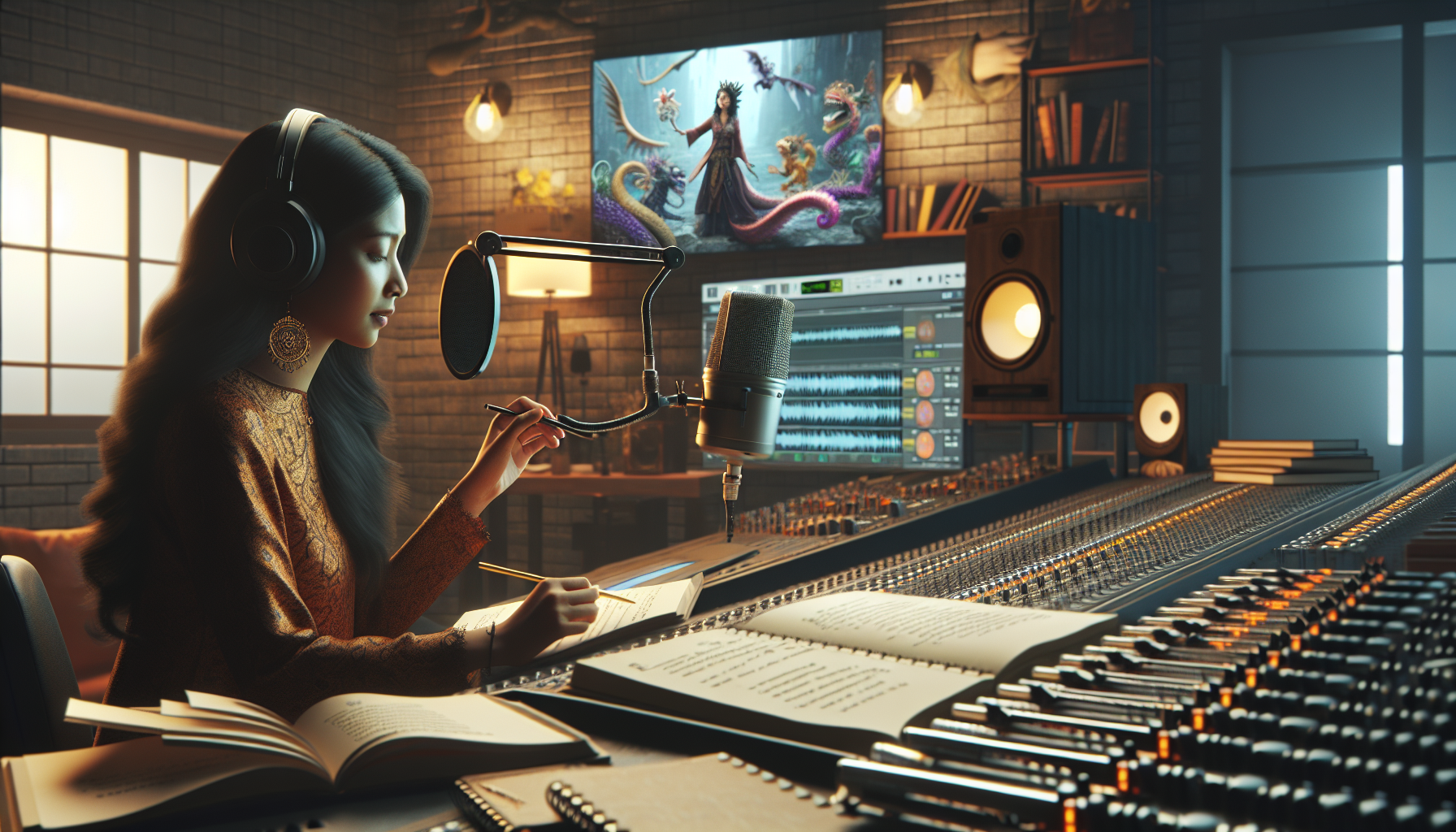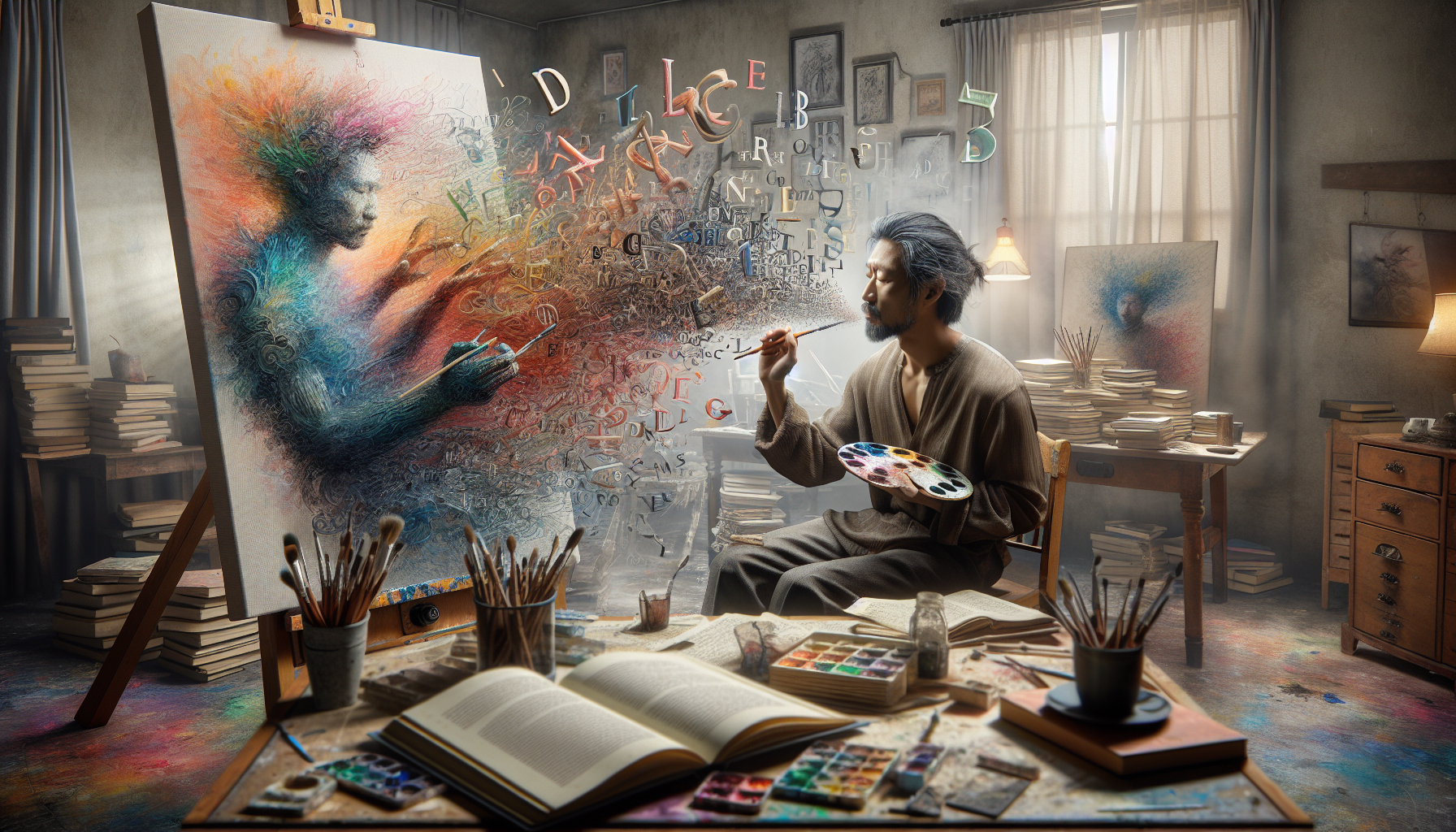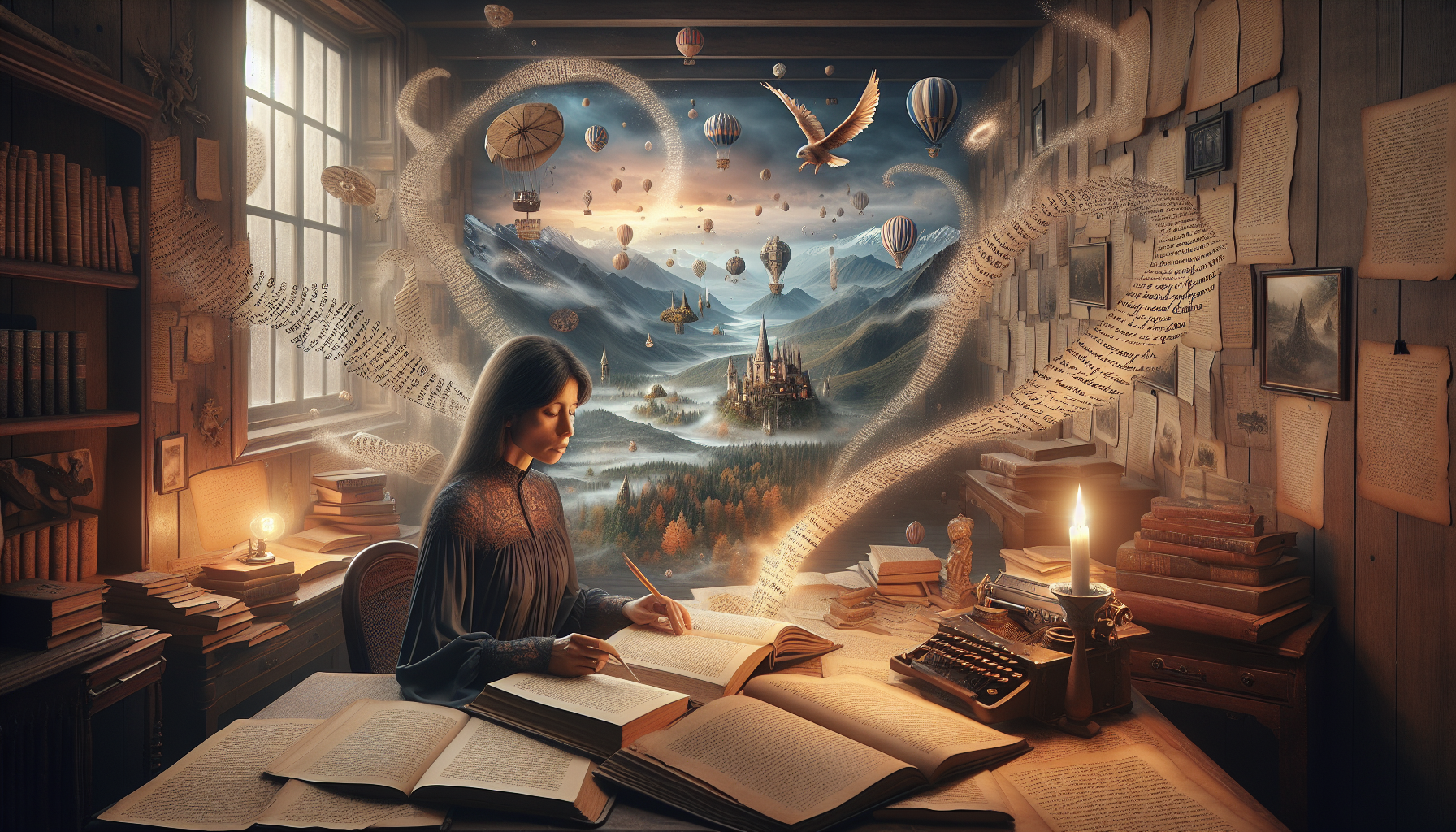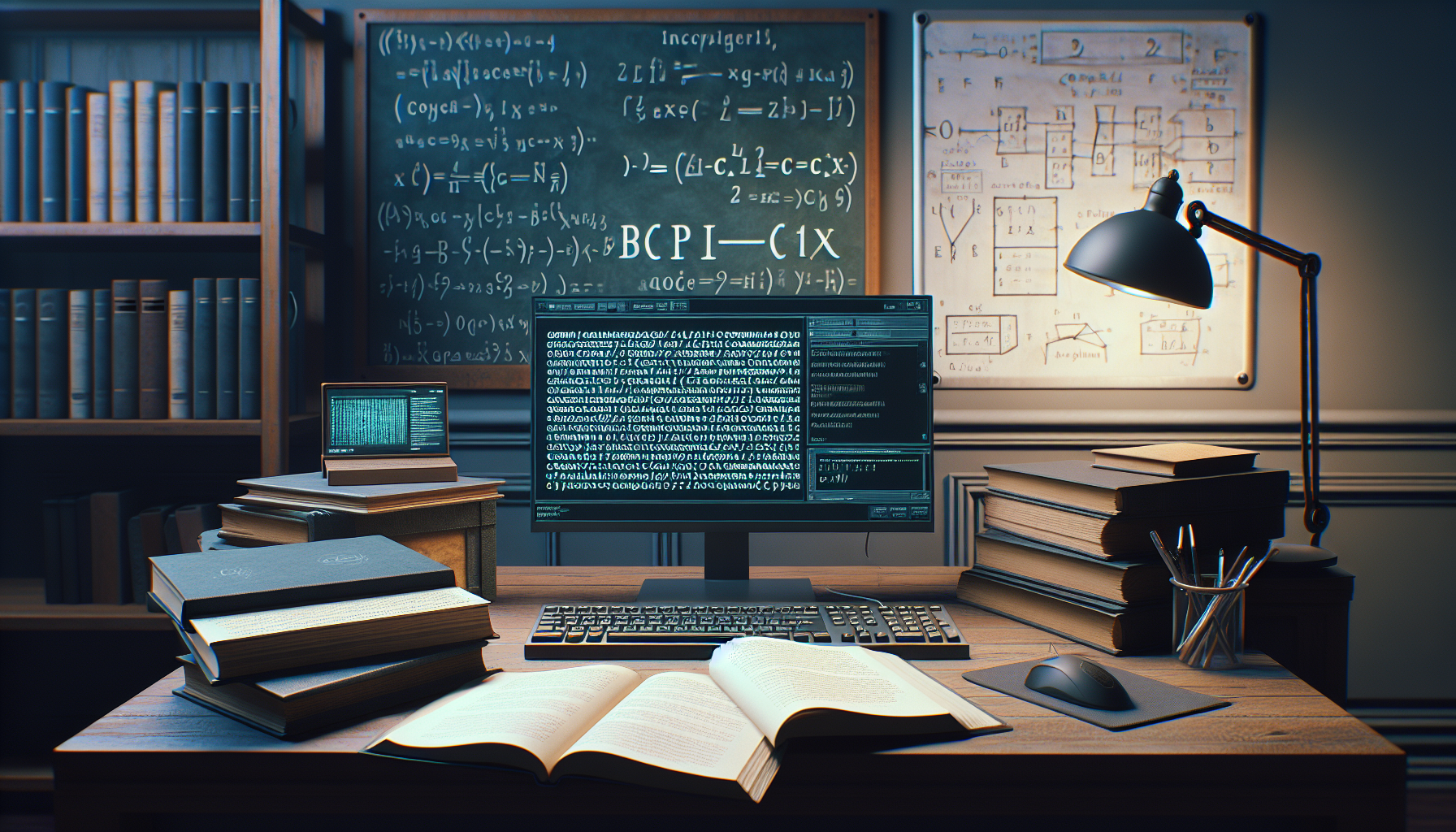In the realm of global entertainment, where stories transcend borders and characters come to life across diverse cultures, the art of dubbing stands as a bridge that unites audiences worldwide. It’s a craft that not only requires technical precision but also a deep understanding of linguistic nuances and cultural sensitivities. Now, imagine adding another layer of complexity: creating authentic voices for imaginary languages. Welcome to “The Art of Dubbing: Creating Authentic Voices in Imaginary Languages,” where we delve into the fascinating world of voice actors who breathe life into the unspoken tongues of fictional universes.
From Elvish whispers in Middle-earth to the majestic Klingon commands aboard starships, imaginary languages have long captivated audiences with their mystique and creativity. These languages are more than just sounds; they are integral to world-building, providing depth and authenticity to the stories we cherish. Dubbing these fictional dialects is not merely a translation task; it is an artistic endeavor that requires a delicate balance of creativity, linguistic expertise, and cultural insight. How do voice actors achieve this balance, and what challenges do they face in making these languages sound as authentic as possible? 🌍
In this exploration, we will journey through the history and evolution of dubbing imaginary languages, examining its significance in the broader context of storytelling. We’ll look at iconic examples from film and television, where linguistic inventiveness has played a crucial role in shaping narratives and character development. From J.R.R. Tolkien’s masterfully crafted Elvish to George R.R. Martin’s Dothraki and Valyrian, we’ll explore the origins of these languages and how they’ve been brought to life through the art of dubbing.
Furthermore, we will discuss the unique challenges faced by voice actors and directors in this specialized field. What techniques do they employ to ensure that the dubbed voices resonate with authenticity, even when the languages themselves are entirely fictional? The process involves not just linguistic fluency but also an understanding of cultural context and emotional expression. By examining interviews with industry professionals and behind-the-scenes insights, we’ll uncover the meticulous efforts that go into creating believable and compelling performances in imaginary languages.
Lastly, we will ponder the future of dubbing in fictional languages. As technology advances and storytelling mediums evolve, what new opportunities and challenges might arise for voice actors and creators? How might artificial intelligence and other innovations impact this intricate art form? As we navigate through these topics, we invite you to appreciate the dedication and creativity involved in giving voice to the unspoken, weaving a tapestry of sound that resonates across the imaginations of audiences worldwide. 🎤
Join us on this linguistic adventure as we unravel the secrets of crafting authentic voices in the fantastical realms of imaginary languages, celebrating the art of dubbing as a testament to the power of storytelling without borders.
The Art of Dubbing: A Journey into Fictional Languages
In the world of cinema and television, dubbing is an essential craft that often goes unnoticed by the audience. It is the art of adding voices to films, television shows, or other media to translate or enhance the audio component. While dubbing in real-world languages is a complex task in itself, dubbing in imaginary or fictional languages presents an even more intriguing challenge. This article explores the intricate process of creating authentic voices in imaginary languages, shedding light on the skills and creativity required to bring these fictional worlds to life.
Understanding the Basics of Dubbing
Dubbing involves a variety of steps that ensure the final product is seamless and believable. The process starts with translation, where the script is converted from the original language to the target language. In the case of imaginary languages, this translation often involves creating a language from scratch. Linguists and language creators, sometimes referred to as conlangers, play a crucial role in this phase. They develop phonetic systems, grammar rules, and vocabulary that give life to these fictional tongues.
Once the language is crafted, voice actors step in to embody the characters. Their task is not only to deliver lines convincingly but also to capture the essence of the characters through vocal performance. This involves mastering the nuances of the imaginary language, such as pronunciation and intonation, to ensure it feels as natural as any spoken language. The actors must also synchronize their performances with the original visual elements, maintaining the integrity of the on-screen action.
The final step in the dubbing process is post-production. Here, sound engineers and editors work to blend the newly recorded voices with the existing audio. This requires careful attention to sound quality and balance, ensuring that the dubbing enhances the overall experience without overshadowing other elements of the production. The seamless integration of voices, sound effects, and music is vital to creating a believable and immersive world for the audience.
The Role of Language Creators in Fictional Dubbing
Creating an authentic fictional language for dubbing is no small feat. Language creators, or conlangers, are responsible for building a language that not only sounds plausible but also fits the cultural and historical context of the fictional world. This involves a deep understanding of linguistics, as well as creativity and storytelling skills.
Language creators often draw inspiration from real-world languages, incorporating familiar sounds and structures to make the fictional language relatable. They might study ancient languages or borrow elements from multiple linguistic traditions to develop a rich and diverse phonetic palette. This attention to detail ensures that the language feels authentic and resonates with the audience.
Beyond phonetics, language creators must also consider the grammatical structure and vocabulary of the language. They establish rules for sentence construction, verb conjugation, and noun declension, creating a framework that voice actors can follow. This systematic approach allows for consistency across the production, helping actors deliver lines that sound natural and coherent.
Case Study: The Creation of the Dothraki Language
One notable example of language creation in dubbing is the development of the Dothraki language for the television series “Game of Thrones.” David J. Peterson, a renowned language creator, was tasked with building the language from scratch. Drawing from his expertise in linguistics, Peterson crafted a language that not only sounded authentic but also fit the nomadic culture of the Dothraki people.
Peterson’s process involved extensive research into the cultural and historical background of the Dothraki. He studied various real-world languages and adapted elements to suit the fictional context. The result was a fully developed language with its own grammar, vocabulary, and pronunciation, allowing the actors to bring the Dothraki characters to life convincingly.
To learn more about David J. Peterson’s work on fictional languages, watch the insightful video on YouTube: “Creating the Languages of Game of Thrones” – Wired.
Challenges in Dubbing Imaginary Languages
Dubbing in fictional languages presents unique challenges that require a combination of linguistic expertise and creative flair. One major challenge is ensuring that the language sounds consistent across different characters and scenes. This consistency is crucial for maintaining the audience’s suspension of disbelief and enhancing the storytelling experience.
Another challenge is the need for extensive rehearsal and practice. Voice actors must familiarize themselves with the language’s phonetic system and practice their lines to achieve fluency. This process can be time-consuming, requiring a significant investment of effort from both the actors and the production team.
Furthermore, the cultural context of the fictional language can influence the dubbing process. Voice actors must understand the cultural nuances and incorporate them into their performances. This might involve adapting their vocal delivery to reflect the social hierarchy, emotions, and relationships of the characters, adding depth and authenticity to their portrayals.
The Impact of Technology on Dubbing
Technology plays a pivotal role in modern dubbing, offering tools and techniques that enhance the dubbing process. Digital audio workstations, for instance, allow for precise editing and mixing, enabling sound engineers to fine-tune every aspect of the audio. This ensures that the final product is polished and professional, with seamless integration of the dubbed voices.
Moreover, advancements in voice synthesis and artificial intelligence are opening new possibilities for dubbing in fictional languages. AI-driven tools can analyze and generate realistic voice performances, providing an additional layer of creativity and flexibility. These technologies, however, still require the human touch to infuse emotional depth and character authenticity into the performances.
In this dynamic landscape, the role of the dubbing artist is evolving. While technology can assist in the technical aspects, the art of dubbing remains rooted in human creativity and storytelling. Voice actors continue to be the heart of the process, bringing characters to life through their vocal performances and enriching the fictional world for audiences worldwide.
Exploring the Future of Dubbing in Fictional Languages
As the entertainment industry continues to expand its horizons, the demand for dubbing in fictional languages is likely to grow. The rise of global streaming platforms has increased the accessibility of international content, prompting studios to invest in high-quality dubbing to reach diverse audiences. This trend is driving innovation and pushing the boundaries of what is possible in the realm of fictional language dubbing.
One exciting avenue for the future is the collaboration between language creators and filmmakers. By working closely together, these creative minds can develop languages that not only serve the narrative but also enhance the cultural richness of the fictional world. This synergy can result in more immersive storytelling experiences, captivating audiences and deepening their connection to the content.
Another potential development is the integration of interactive elements into dubbing. As virtual reality and augmented reality technologies evolve, there may be opportunities to create interactive experiences where audiences can engage with fictional languages in real-time. This could lead to new forms of storytelling, where viewers become active participants in the narrative, exploring fictional worlds and languages in unprecedented ways.
Get Involved: Learning and Experimenting with Fictional Languages
If you’re interested in delving deeper into the art of dubbing in fictional languages, there are several ways to get involved. Consider joining online communities and forums dedicated to language creation and dubbing. These platforms offer a wealth of resources, including tutorials, discussions, and collaborative projects, allowing you to learn from experienced conlangers and voice actors.
- Participate in workshops and conferences focused on language creation and dubbing. These events provide opportunities to network with industry professionals and gain hands-on experience in the field.
- Explore language creation software and tools that can help you experiment with crafting your own fictional languages. These tools offer intuitive interfaces and comprehensive resources to guide you through the process.
- Engage with online courses and tutorials that cover various aspects of dubbing, from voice acting techniques to sound engineering. These educational resources can equip you with the skills needed to embark on your own dubbing projects.
In conclusion, the art of dubbing in fictional languages is a fascinating and multifaceted discipline that combines linguistic expertise, creative ingenuity, and technical skill. It is a testament to the power of storytelling and the limitless possibilities of imagination. Whether you’re a language enthusiast, a voice actor, or a filmmaker, exploring the world of fictional language dubbing offers a wealth of opportunities to create, learn, and inspire. Dive into this captivating realm and discover the art of bringing imaginary worlds to life through authentic voices.
| Aspect | Real-World Language Dubbing | Imaginary Language Dubbing |
|---|---|---|
| Translation | Requires accurate translation of existing text | Involves creating a new language from scratch |
| Voice Acting | Focuses on matching original tone and emotion | Requires mastery of fictional language pronunciation |
| Post-Production | Seamless integration with original audio | Ensures consistency and authenticity of language |
In conclusion, the art of dubbing in fictional languages is a fascinating and multifaceted discipline that combines linguistic expertise, creative ingenuity, and technical skill. It is a testament to the power of storytelling and the limitless possibilities of imagination. Whether you’re a language enthusiast, a voice actor, or a filmmaker, exploring the world of fictional language dubbing offers a wealth of opportunities to create, learn, and inspire. Dive into this captivating realm and discover the art of bringing imaginary worlds to life through authentic voices.

Conclusion
In wrapping up our exploration of “The Art of Dubbing: Creating Authentic Voices in Imaginary Languages,” we traversed a fascinating landscape where creativity meets technical prowess. This niche but profoundly impactful art form demands a deep understanding of linguistics, an ear for emotion, and a touch of creative genius to bring fictional worlds to life. Throughout the article, we dissected the various elements that make this art form both unique and crucial in the realm of media and entertainment.
We began by delving into the historical evolution of dubbing, tracing its roots back to the early days of cinema. This historical context provided a foundation for understanding how dubbing has morphed into a sophisticated craft. It was crucial to acknowledge the pioneers of this art, whose innovation laid the groundwork for the modern techniques we see today.
Our journey continued as we explored the intricacies of creating imaginary languages. This aspect of dubbing goes beyond mere translation; it involves constructing phonetic systems, grammar, and vocabulary from scratch. The process is akin to building a world, requiring collaboration between linguists, writers, and voice actors. We highlighted examples from popular media such as “The Lord of the Rings” and “Game of Thrones,” where constructed languages like Elvish and Dothraki added layers of authenticity and depth to the narrative.
The technical aspects of dubbing were not overlooked. We examined the role of technology in refining the dubbing process, from sophisticated recording equipment to software that ensures lip-sync accuracy. This technology allows for seamless integration of dubbed voices into the original media, preserving the viewer’s immersive experience.
Importantly, we addressed the cultural nuances involved in dubbing. Authenticity in imaginary languages is not just about sound but also about conveying the cultural essence of fictional societies. This requires a keen understanding of the fictional world’s culture and societal norms, which voice actors and directors must portray with sensitivity and accuracy.
The article also shed light on the collaborative nature of this art form. Dubbing is not a solitary endeavor but a symphony of talents working in harmony. Directors, scriptwriters, and sound engineers collaborate to ensure that every dubbed line resonates with the intended emotion and context. This synergy is vital to creating a believable and engaging viewer experience.
Furthermore, we discussed the growing importance of dubbing in global media. With the rise of streaming platforms, content is more international than ever, necessitating high-quality dubbing to reach diverse audiences. This has elevated the status of dubbing artists, making them essential players in the global entertainment industry.
The topic of inclusivity also found its place in our discussion. Dubbing provides an opportunity for audiences who might not have access to subtitled content, including those with visual impairments or literacy challenges, to enjoy and appreciate global media. By making content accessible to a wider audience, dubbing contributes to a more inclusive media landscape.
As we conclude, it’s essential to reinforce the significance of this art form. Dubbing in imaginary languages is more than just a technical exercise; it’s a celebration of creativity and human expression. It enriches storytelling by adding authenticity and depth, transporting audiences into fantastical realms with voices that feel real and relatable.
We encourage you, our readers, to reflect on the incredible work that goes into the media you consume. The next time you watch a dubbed film or series, take a moment to appreciate the layers of creativity and effort that bring those imaginary worlds to life. We invite you to engage with this content by commenting on your experiences with dubbed media, sharing this article with fellow enthusiasts, or even exploring the craft yourself if you feel inspired.
In the ever-evolving world of media, dubbing will continue to play a pivotal role. As technology advances and storytelling becomes increasingly global, the demand for high-quality, authentic dubbing will only grow. This presents exciting opportunities for aspiring linguists, voice actors, and directors to innovate and push the boundaries of what is possible in this field.
In closing, the art of dubbing is a testament to the power of voice and language. It connects us to stories beyond our immediate cultural understanding and reminds us of the universal nature of storytelling. Let this inspire us all to embrace the creativity and dedication that goes into creating these authentic voices, and to celebrate the artists who make it all possible. 🎬✨
For those interested in delving deeper into the world of dubbing and constructed languages, here are some resources to explore:
– The Language Creation Society [https://conlang.org/]
– Dubbing Organizations such as The National Association of Voice Actors [https://www.navavoices.org/]
Let us continue to celebrate and support the art of dubbing, ensuring that it thrives and evolves for generations to come.
Toni Santos is a visual cryptographer and artisan, weaving hidden meaning into every line, curve, and composition. His creations delve into the mysterious world of secret codes, symbolic alphabets, and invented languages, transforming visual art into a rich tapestry of communication beyond words.
Guided by a lifelong fascination with hidden knowledge and the power of symbols, Toni explores how meaning can be embedded, concealed, and rediscovered. From constructed glyphs to encoded illustrations, each piece he creates serves as a portal to a deeper layer of understanding — one that invites curiosity, interpretation, and wonder. His work bridges the intuitive with the intellectual, the mystical with the methodical.
With roots in handcrafted artistry and a background in visual semiotics, Toni fuses form and function to create works that whisper rather than shout. These are not just images — they are visual riddles, poetic encryptions, and artifacts of a language yet to be spoken.
As the creative mind behind Vizovex, Toni offers a space where art meets encryption, and viewers are invited to decode, reflect, and engage. Through symbolic design, visual lexicons, and explorations into constructed languages, he builds a universe where meaning is layered, intentional, and always slightly out of reach — waiting to be discovered.
His work is a tribute to:
The unseen languages that shape our perception
The art of hidden messages and symbolic systems
The thrill of decoding and the beauty of mystery
Whether you’re a language lover, a codebreaker at heart, or someone drawn to the enigmatic, Toni invites you to explore a world where expression transcends convention — one glyph, one message, one mystery at a time.





